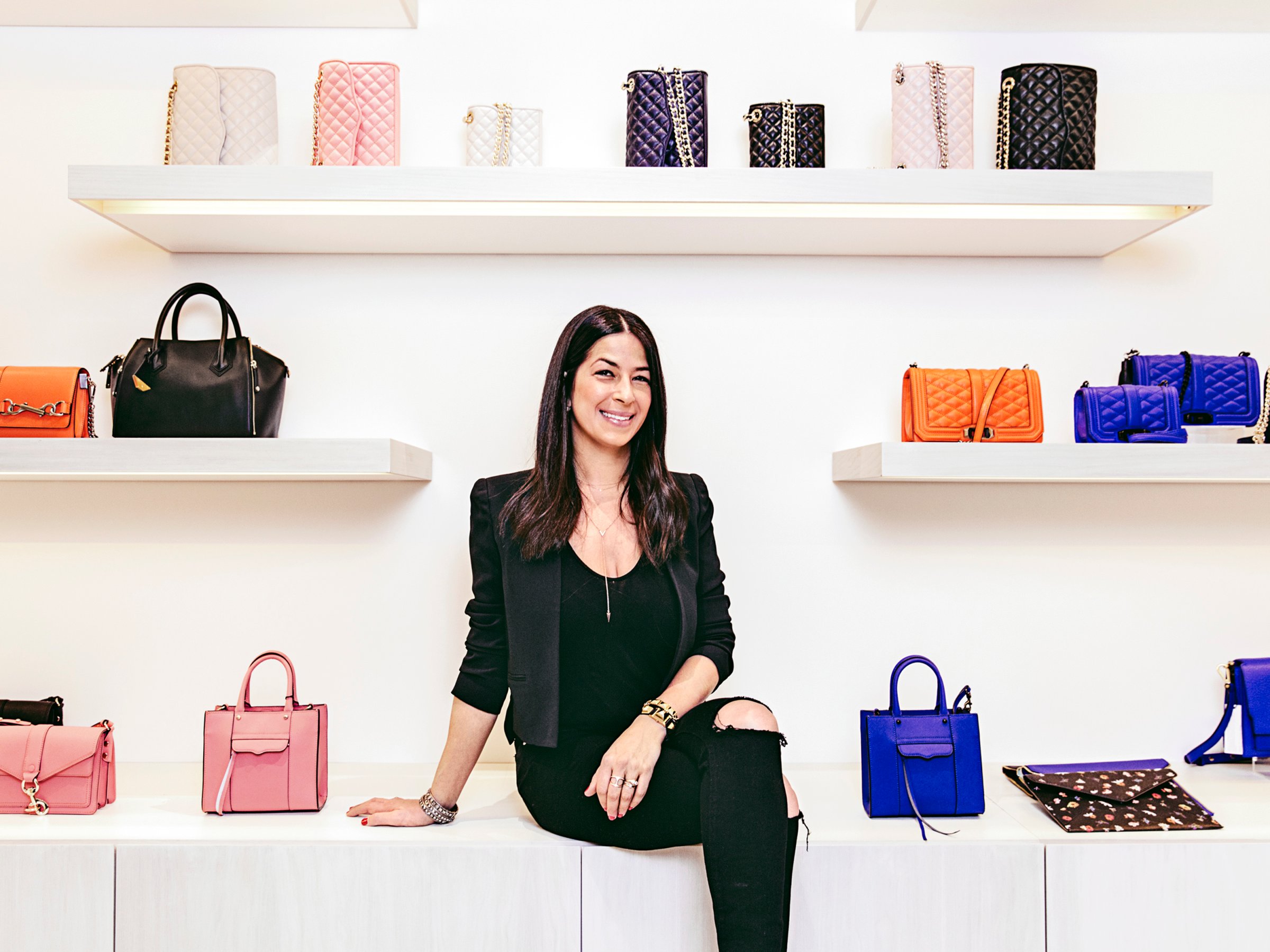
From the street, Rebecca Minkoff’s new flagship boutique in Manhattan’s SoHo district looks a lot like a minimalist art gallery. The slim, cavernous interior is painted in muted tones that contrast with the electric colors of the 34-year-old designer’s signature handbags. But inside, things turn high-tech: in the front of the store, which opened in November, a giant mirrored panel shows images of models sailing down a runway. Shoppers are interacting with the display–which is both a mirror and a touchscreen, powered by software that aims to play omnipotent personal shopper. Entering their phone number, they order up a personalized fitting room. Once inside, another smart mirror takes over, offering style tips based on their selections, as well as the ability to request a different size or simply change the lighting. Minkoff’s app for mobile phones saves their browsing history and style preferences for the next visit. When a customer is ready to make a purchase, a cheery sales attendant takes payment on an iPad.
All this digital finery is built on a firm fashion foundation. Minkoff first attracted buzz in 2005 when her Morning After handbags ($525) became popular with such celebrities as Reese Witherspoon and Jennifer Lawrence. Since then, the California-born designer has expanded into women’s wear, accessories, footwear and jewelry. Her privately held company–Minkoff’s brother Uri is its CEO–will surpass $100 million in sales in 2014 and, she says, is profitable. Now Minkoff, who has four stores but does most of her sales online, is increasingly looking to high technology to refine the store experience. “You can come in here and be completely anonymous, or you can get VIP treatment,” she says. “You can take back control.”
Minkoff is not alone. Retailers ranging from Apple to Walmart are exploring new technologies to transform the shopping experience. Now-familiar touches like paperless receipts, signing for purchases on a touchscreen and ordering an item online to pick it up at a store are mere precursors to what Minkoff’s CEO calls “retail 3.0.” Fashion firms such as Burberry and Topshop are experimenting with preference-tracking technology–a staple of online shopping, in which shoppers receive recommendations based on past selections–similar to Minkoff’s.
Meanwhile, technology firms like Google are likely to play a growing role in in-store shopping, thanks to their digital payment systems. (Consumers can now tap their new iPhones to pay at some stores.) Even Amazon is planning to test a location in Manhattan in 2015 that will offer limited inventory and same-day shipping to New Yorkers.
To help push the envelope, Minkoff is partnering with another online giant, eBay. Rebecca and Uri have been working with Healey Cypher, eBay’s head of retail innovation, who has integrated digital experiences into physical stores such as Nordstrom and Kate Spade. (eBay may be hoping that pushing into physical stores will bolster its flagging online sales.) Cypher persuaded the Minkoffs to implement RFID technology–small tags that can store data. Now every garment is tagged, identified and tracked, streamlining the stockroom and making the store’s interactivity possible. “We approached this store like software. It’ll get better. It’s a living, breathing store,” says Cypher. He says the technology is already leading to higher sales but won’t disclose by how much.
Retail analysts expect to see more of this in 2015. Changes to a store near you could include mood-detecting technology–what Sarah DaVanzo, chief cultural-strategy officer of ad agency Sparks & Honey, calls “moodgeisting.” It’s already happening in other industries. She says airlines, for instance, are experimenting with seating flyers according to shared interests from their social networks. The hope for retailers is to generate higher sales per square foot. Says DaVanzo: “If it’s going to get me better services, if it knows my size, it’s going to get me better options.”
Not everyone is convinced a retail revolution is in the offing, though. Simon Collins, a creative consultant and former dean of fashion at Parsons the New School for Design, argues that retailers are focusing on high tech over commonsense improvements. “Some good lighting, some good music–is it really so hard?” he asks. Then there’s privacy, a potentially growing concern in the wake of major hacking attacks on outlets like Target.
The Minkoffs and Cypher think they’ve found an ideal balance. But time will tell if shoppers go for the digital dazzle. Back at the boutique, Suhey Estevez, a Harper’s Bazaar intern who runs a fashion blog called Leather Is the New Black, says she enjoyed playing with the store’s smart mirrors and watching her fellow shoppers do so–but she didn’t buy anything.
More Must-Reads from TIME
- Why Trump’s Message Worked on Latino Men
- What Trump’s Win Could Mean for Housing
- The 100 Must-Read Books of 2024
- Sleep Doctors Share the 1 Tip That’s Changed Their Lives
- Column: Let’s Bring Back Romance
- What It’s Like to Have Long COVID As a Kid
- FX’s Say Nothing Is the Must-Watch Political Thriller of 2024
- Merle Bombardieri Is Helping People Make the Baby Decision
Contact us at letters@time.com